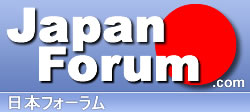
 |
Japanese for Busy People 2 Workbook - Page 6
Hi all,
Just a little confused with the workbook for JFBP2. On page 6, it lists various means of transport to Narita from Tokyo Station. One of the questions is: 成田エクスプレスとリムジンバスとどちらが時間がかか りますか I'm confused at what it is asking. Is it asking which take less time or which takes more time? I am guessing by context that it means which takes more time? Thanks in advance :vsign: |
Quote:
Better speakers wouldn't use と&と there, though, as it sounds pretty child-like. They use either と&とでは or と&では. |
Thanks Sashi!
So you are saying that it is more common to say: 成田エクスプレスとリムジンバスとではどちらが時間がかかりますか Or 成田エクスプレスとリムジンバスではどちらが時間がかかりますか |
Quote:
The double-と can be used with a kid or a close friend in a casual convo, though, I might add. |
Such a useful advice!
Sashimister, we only use (と)では if we use a transport? Or can we also use for other stuff like: 高松さんと高橋さんと誰が背が高いですか。 おすしと鶏肉とどっちがおいしいですか。 お願いします。 |
Quote:
It doesn't have to be about tansportation methods. You can use it for any kind of comparisn. 高松さんと高橋さんと誰が背が高いですか。 This sentence has a non-particle problem. You can only use 誰/何/いつ/どこ, etc. when comparing more than two things/persons. In this sentence, どちら/どっち must be used. 高松さんと高橋さんとではどちらが背が高いですか。 Best 高松さんと高橋さんではどちらが背が高いですか。 Close second 高松さんと高橋さんとどちらが背が高いですか。 Childish or very casual. おすしと鶏肉とどっちがおいしいですか。 is correct. You can make it "more than correct" by using the same particles asabove. |
Quote:
|
| All times are GMT. The time now is 02:35 PM. |